This easy chocolate sauce recipe takes just two ingredients and less than five minutes to make! It’s the perfect chocolate sauce for ice cream, coffee, cocoa, cocktails, and anything else you’d like to dip or drizzle!
For other sweet sauce guides, check out my honey balsamic dressing or tutorial for thickening chocolate sauce.
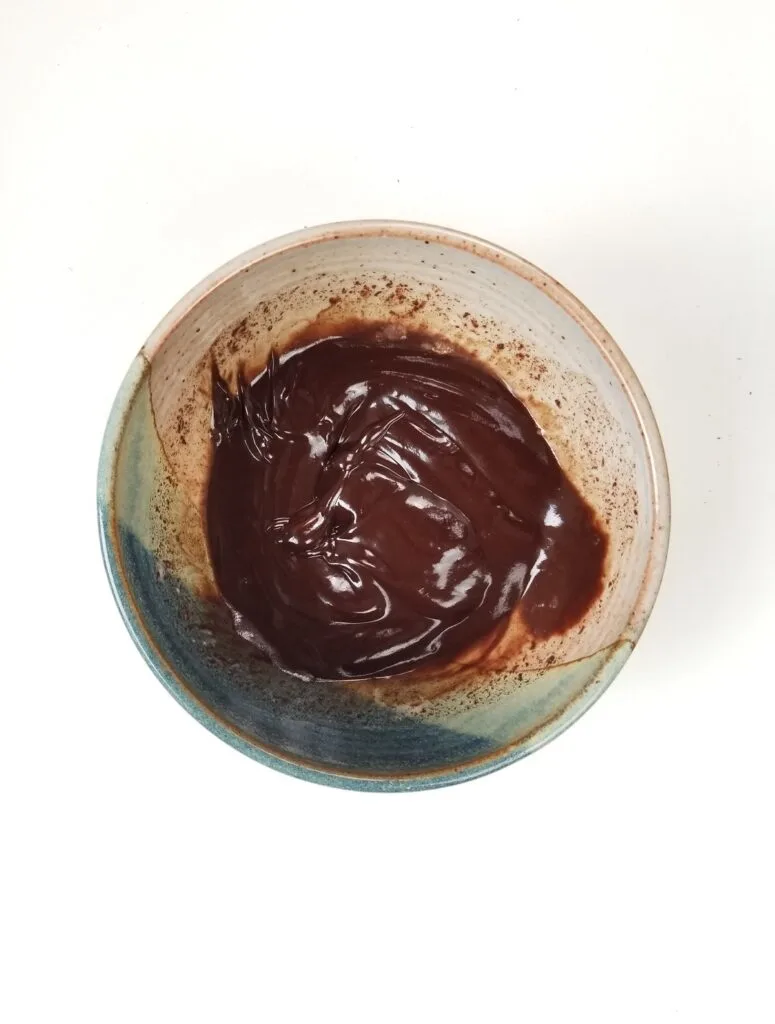
Jump To
- 😋 Why this recipe is great
- 🍫 Ingredients
- 📖 How to make chocolate sauce: step-by-step instructions
- 🥣 How to make chocolate sauce that hardens
- 🎓 How to fix seized chocolate sauce
- 📝 Substitutions and variations
- 🥘 Storage and reheating
- ⭐ Ways to use chocolate sauce
- 👨🏻🍳 Expert notes & tips
- 🙋🏻♂️ Frequently asked questions
- 5-Minute Chocolate Sauce (in Microwave)
😋 Why this recipe is great
House Favorite: for years we’ve been making this chocolate sauce for strawberries, ice cream, and making mochas, so I know it’s both quick and fool-proof. Use this chocolate sauce for churros, ice cream, cheesecake, coffee, and really anything else you’d like!
Touch of Richness: drizzling on a bit of warm dark chocolate sauce adds a luxurious finish that elevates any sweet treat into something extraordinary. Learning how to make dipping chocolate or a rich drizzling chocolate sauce means you’ll never be without a touch of elegance.
Highlights Good Chocolate: wondering what to do with that fancy chocolate you got last Christmas? Make a sauce! In crafting your own chocolate sauce, the secret lies in choosing high quality chocolates, preferably craft chocolate made from a minimal number of ingredients. My favorite chocolate for chocolate sauce is either Guittard or Valrhona, both of which make chocolates that are smooth, balanced, and delicious.
🍫 Ingredients
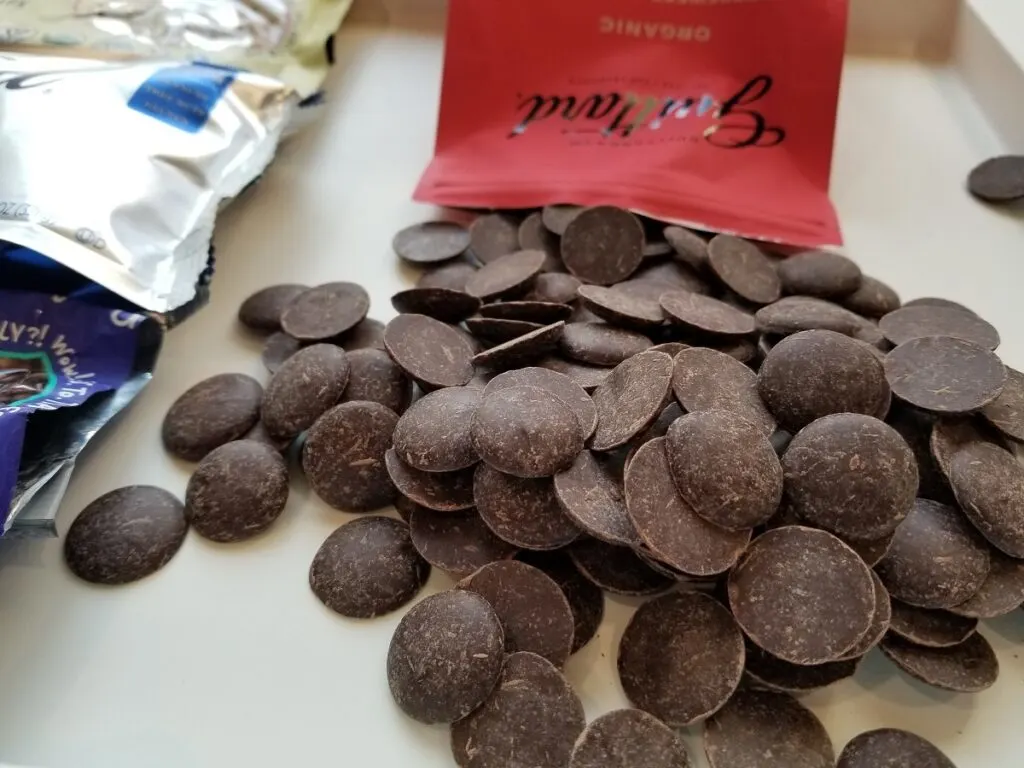
Chocolate: this is the base for this 2 ingredient chocolate sauce recipe, and whatever your chocolate tastes like, that’s what your homemade chocolate sauce will taste like – so choose wisely. For a vegan chocolate sauce, be sure to choose a dark chocolate made with organic cane sugar and no added dairy.
Cream: you can use dairy cream or vegan cream here, but it’s important that the amount of fat be high enough that it can keep the sauce liquid, even at room tempature. Ideally you’ll use a cream with at least 30% [milk] fat by weight.
See recipe card for quantities.
📖 How to make chocolate sauce: step-by-step instructions
Step 1. Measure your chocolate chips or prepare a chocolate bar by slicing it into fine shards, regardless if using a bar or callets, to ensure small pieces for easier melting. Set aside and do not mix in yet.
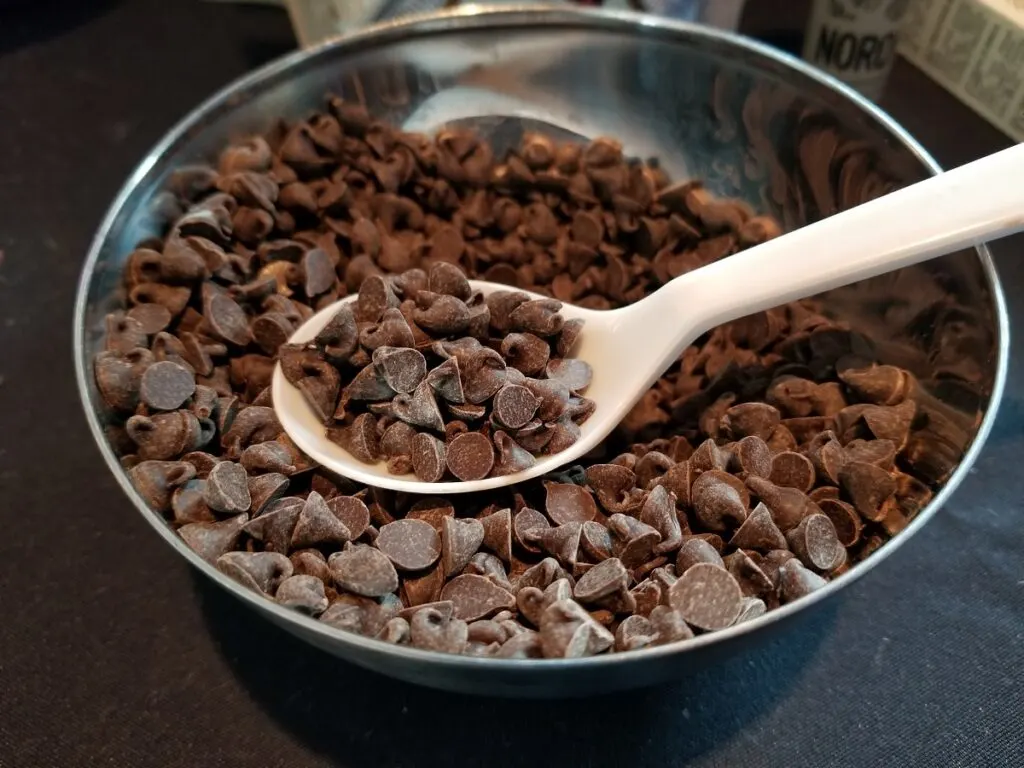
Step 2. Pour the cream into a small bowl and warm in the microwave for about 15-20 seconds. Make sure the cream is just a bit warmer than body temperature, heating in 5-second intervals if not yet hot enough. Following this, immediately blanket the warm cream base with the chocolate pieces.
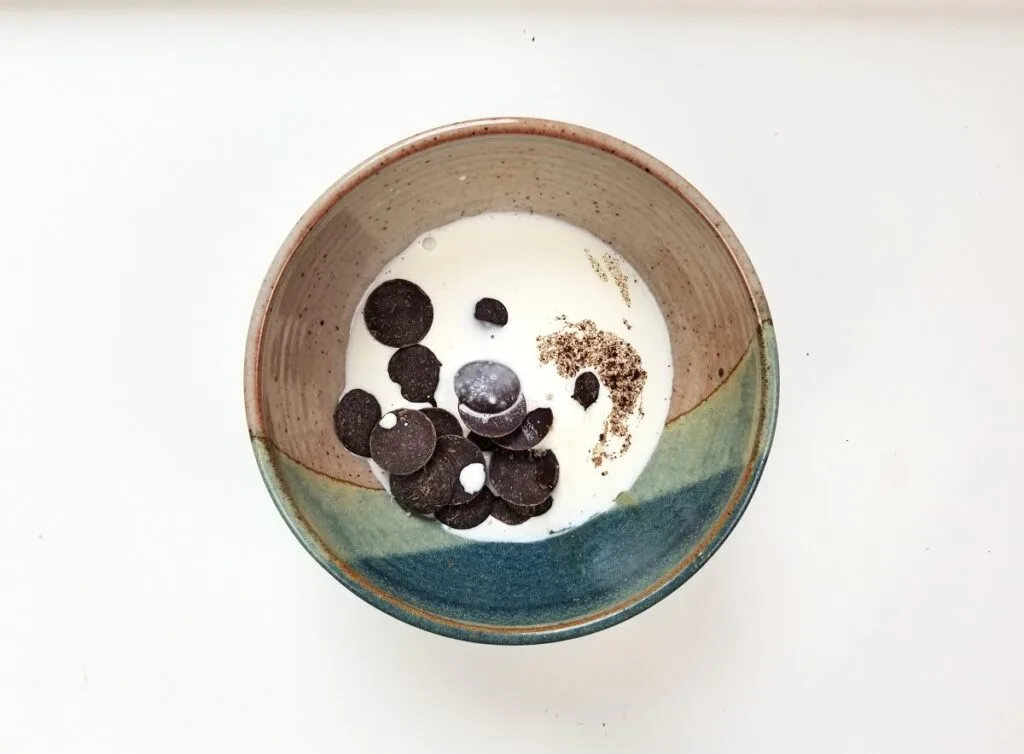
Step 3. Allow the duo to rest undisturbed for two or three minutes, granting the chocolate ample time to soften and preventing the separation of fats and solids, as it would in curdling dairy.
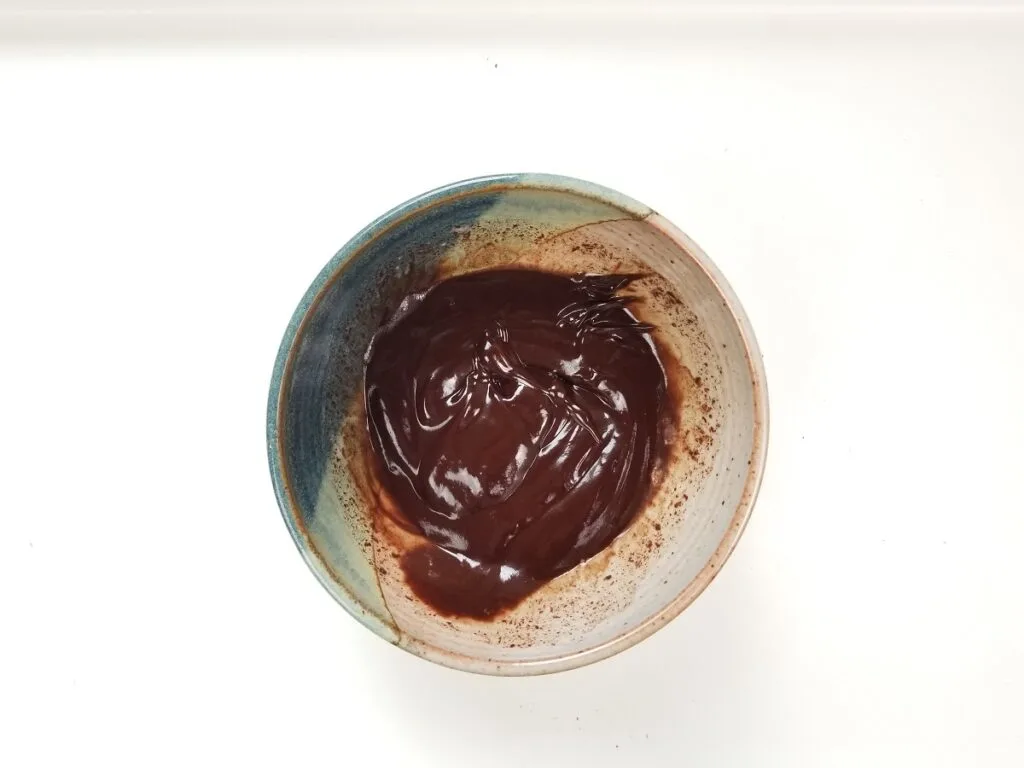
Step 4. After the brief wait, stir the chocolate and cream mixture energetically, and within about 10 seconds you’ll notice the sauce becoming glossy and smooth.
💡 Pro-Tip: For enhanced flavor and overall sweetness, sprinkle a bit of salt into the sauce and stir again thoroughly before enjoying.
🥣 How to make chocolate sauce that hardens
To make a chocolate sauce that gets hard upon cooling, like for dipping fruits or pretzel rods, start by melting equal amounts of chocolate and a neutral fat that stabilizes when cool, such as coconut oil or butter. This will help the sauce thicken and solidify once poured over treats like ice cream. Here’s a simple approach:
- Combine equal portions of chocolate and coconut oil (or butter) in a bowl.
- Melt them together, using a double boiler or microwave, stirring often.
- Cool the mixture slightly before pouring over your cold dessert for a magic shell-like coating.
🎓 How to fix seized chocolate sauce
When you’re dealing with chocolate sauce, specifically a form of ganache (like this sauce), sometimes your sauce may start to separate into liquids and solids. When your chocolate and liquid mix begin separating, the cause is often the fat in the chocolate forming clumps instead of emulsifying with the liquid. This leads to a grainy texture rather than the silky smoothness you’re aiming for.
Temperature Troubles: Heating chocolate too quickly or unevenly can lead to a broken sauce. Be sure your liquid is warm (but not boiling) when you add the chocolate, which can help maintain a thin, emulsified consistency. Gentle and slow heat is your friend here.
Inconsistent Ratios: If you mix too much liquid into your chocolate, chances are the chocolate sauce will split. Aim for a balanced ratio, or work to balance out the ratio.
Stirring Strategy: Mixing too vigorously can also cause the ganache to separate – a careful folding technique works best.
To troubleshoot a seized chocolate ganache, here are a few of my hard-won tips if your chocolate sauce has separated or become grainy:
- Add Liquid: A splash of warm milk can often smooth out the lumps and help sauce recombine.
- Blend: Gently whisk or use an immersion blender to restore even texture.
- Strain: If needed, strain the sauce to remove any unresolvable solid bits, though this is a last-ditch method.
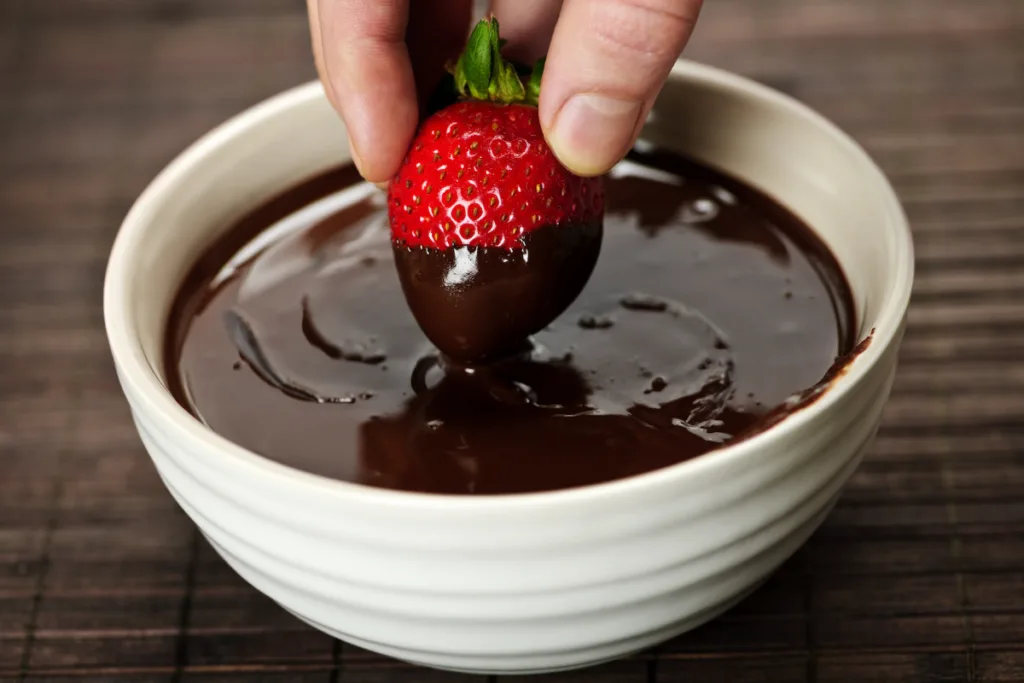
📝 Substitutions and variations
When tweaking your chocolate sauce recipe, remember that the ingredients’ flexibility is your friend.
Chocolate Types: Dark, milk, and white chocolate each bring their unique taste and consistency to the sauce. Feel free to mix and match or use a combination of different chocolate types.
- Dark Chocolate for a strong, bittersweet flavor that complements most desserts.
- Milk Chocolate for a milder, sweet taste that complements many desserts.
- White Chocolate tends to blend in, so it might not stand out with ice cream.
- Ruby Chocolate can be overpowering, so be cautious of its interaction with other dessert flavors.
Dairy-Free: Traditionally, chocolate sauce is made with cream, but you can easily swap it for milk, half-and-half, or even non-dairy milk alternatives like almond or coconut milk, though keep in mind that if you use a lower-fat liquid, you’ll need a bit more of it to get the same smooth consistency.
Sweetness Adjustments: Not all taste buds are the same! Play around with the sweetness level by adding a bit of liquid sweetener, carefully drizzling it in an mixing well to combine. If you add a liquid sweetener too quickly, it will cause the chocolate to seize, so do drizzle slowly. Try condensed milk, honey, maple syrup, or liquid stevia or monk fruit.
- Spice it Up – Give your sauce some warmth by adding a pinch of cinnamon, nutmeg, or chili powder. A splash of vanilla extract or a dash of vanilla paste can also add depth to the flavor.
- Texture Variations – If you enjoy a bit of crunch, consider stirring in some finely chopped nuts after the sauce has cooled down a bit.
🥘 Storage and reheating
Store homemade chocolate sauce in an airtight container in the refrigerator for up to 2 weeks. Always allow chocolate sauce to reach room temperature before storing it, ideally in a glass container for easy reheating in the microwave (or storage in the freezer).
You can even freeze homemade chocolate sauce for up to 6 months, but bear in mind that upon reheating, frozen sauce is much more likely to separate.When you’re ready to use your stored chocolate sauce again, here’s the best way to warm it back up:
- Gentle Reheating: Place the desired amount of chocolate sauce in a microwave-safe container or in a saucepan over low heat.
- Stirring: Continuously stir while heating to ensure even warmth and to prevent burning.
- Consistency Check: If the sauce seems too thick, you can add a small amount of water, milk, or cream to thin it out to your liking. Remember, reheating should be done just before serving for the best flavor and texture.
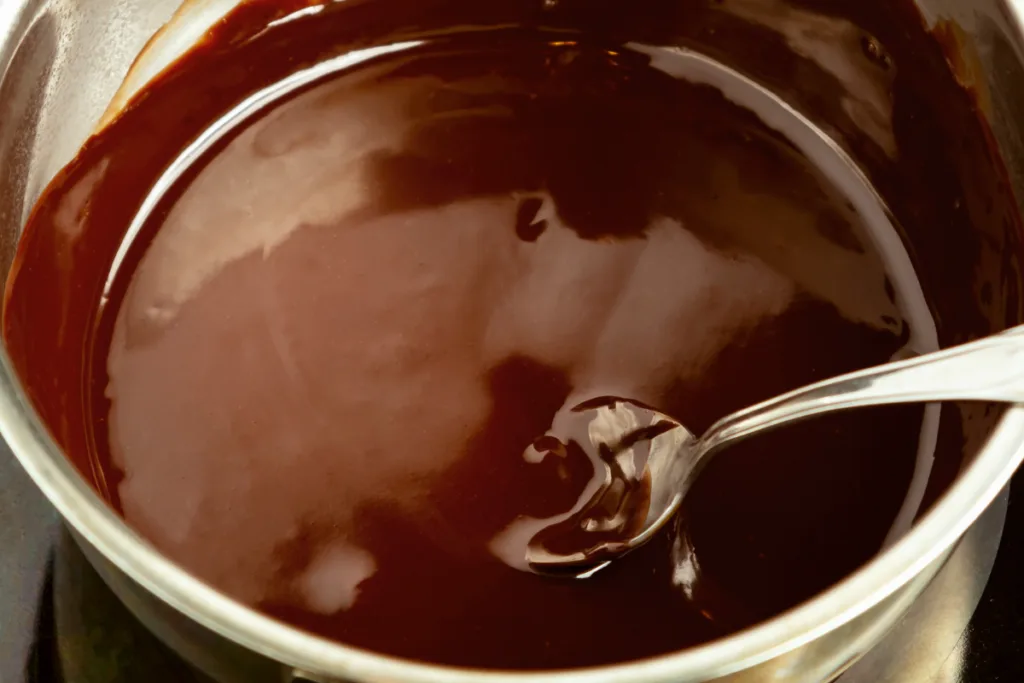
⭐ Ways to use chocolate sauce
- Ice Cream: Elevate a scoop with a drizzle of sauce.
- Cakes: Spread between layers for moist, rich flavor.
- Brownies: Top with warm chocolate sauce for a luxurious twist.
- Energy Bars: Blend into dough as a binder.
- Pancakes: A decadent drizzle makes breakfast special!
- Chocolate Fondue: dollop in your sauce and keep it warm, perfect for dipping.
- Dip Fruit: Try strawberries, cherries, whole seedless grapes, etc.
- Drizzle: Pour lines of it over chewy rice crispy treats.
- Chocolate Grahams: coat classic graham crackers in chocolate for a deconstruted s’more.
👨🏻🍳 Expert notes & tips
Adding Salt: when you add a pinch of salt to the chocolate sauce, it just helps to emphasize the inherent sweetness of the sauce, though you can certainly leave it out.
Chocolate Chips Sauce: you can even make a delicious homemade chocolate sauce using chocolate chips, though you may need to use slightly more cream than you’d need when using a chocolate bar.
Fixing Separation: Note that if the oil seems to separate and stay on the top no matter how you treat it, add a teaspoon of room temperature water and beat everything again over a bowl of hot water (a homemade bain marie), repeating the process until everything comes together again.
Monitoring Temperatures: Carefully watch your cream’s temperature during heating. Warm it briefly, using 5-second bursts, to achieve a comfortably hot temperature without scalding. The sauce will be thinner when it’s hot, but cool as the sauce comes to room temperature.
🙋🏻♂️ Frequently asked questions
Chocolate sauce is typically made from ingredients such as chocolate or cocoa powder, sugar, and a liquid such as water, milk, or cream, often with a touch of vanilla for flavor and sometimes butter for a richer texture, though chocolate sauces made from chocolate and cream are the richest.
The difference between chocolate sauce and chocolate syrup lies in their respective consistencies and uses. Chocolate syrup is usually a thinner, sweeter liquid primarily used to flavor beverages or as a topping for desserts, while chocolate sauce is thicker with a richer chocolate flavor, often used for drizzling over or mixing into desserts.
To make chocolate sauce from a chocolate bar, finely chop the chocolate and gently melt it with a small amount of cream or milk over low heat or in a double boiler, stirring until smooth. You can adjust the thickness by adding more or less liquid as desired, though never add cold liquids to hot chocolate.
To make a chocolate sauce that doesn’t harden when it cools, incorporate an ingredient like corn syrup, which prevents the sauce from crystallizing (i.e. hardening). You can also use a higher ratio of cream to chocolate and add a bit of butter, ensuring the sauce stays smooth and pourable even at room temp.
To give your chocolate sauce a more substantial consistency, consider adding a small amount of corn starch, which can provide thickness without altering taste. Alternately, simmer your sauce over low heat to evaporate excess water content, or incorporate more heavy cream or condensed milk for additional richness.

5-Minute Chocolate Sauce (in Microwave)
Ingredients
- ¾ cup heavy cream
- 1 cup chocolate 6oz. chocolate by weight
Instructions
- Measure your chocolate chips or prepare a chocolate bar by slicing it into fine shards, regardless if using a bar or callets, to ensure small pieces for easier melting. Set aside and do not mix in yet.
- Pour the cream into a small bowl and warm in the microwave for about 15-20 seconds. Make sure the cream is just a bit warmer than body temperature, heating in 5-second intervals if not yet hot enough. Following this, immediately blanket the warm cream base with the chocolate pieces.
- Allow the duo to rest undisturbed for two or three minutes, granting the chocolate ample time to soften and preventing the separation of fats and solids, as it would in curdling dairy.
- After the brief wait, stir the chocolate and cream mixture energetically, and within about 10 seconds you’ll notice the sauce becoming glossy and smooth. For an enhanced taste, sprinkle a bit of salt into the sauce and stir again before enjoying.

